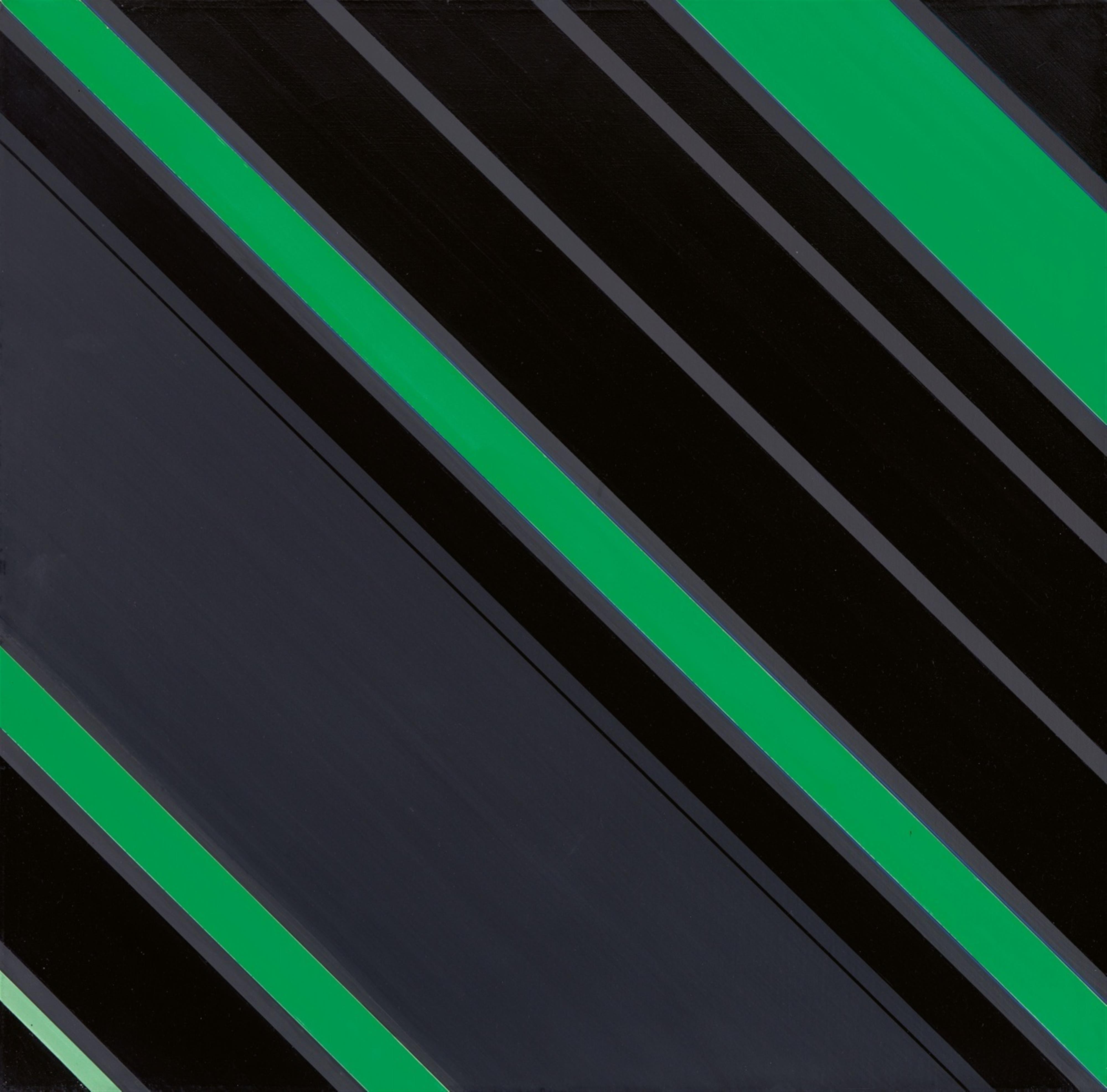Günter Fruhtrunk
Epitaph für Hans Arp
1972
Acrylic on canvas. 79 x 80 cm. - Traces of studio and minor traces of age.
The order in Günter Fruhtrunk's work is striking. It determines his strategy, after initial experiments with informal shapes in the 1950s, hereafter making a decisive and impressive contribution to the subject of 'concrete painting' as described by Theo van Doesburg in his founding manifesto for 'Concrete Art' in 1930: “We embark on the age of pure painting by constructing the intellect-form. [...] Concrete and not abstract painting, because nothing is more concrete, more real than a line, a colour, a surface”. (Theo van Doesburg, Commentaires sur la base de la peinture concrète, in: art concret, 1, April 1930, p.2; cited from Erich Franz, Expansion und Konzentration, in: Günter Fruhtrunk, Verzeichnis der Gemälde, 2018, vol. 1, p. 13). In this sense, Fruhtunk developed an ingenious concept that 'functioned' throughout his life. He repeated found patterns of colour and structure, implementing slight variations, declining batches in respectively thematic corresponding sequences, stringing them together, tilting them horizontally or vertically, surface by surface, line by line, diagonal by diagonal, colour by colour. This strict order of regular repetitions, “variations in images”, can continue endlessly and expand in their pattern repeat-like axis or symmetry formation. They show a detail in focus, as if enlarged out of the sheer endless universe of Fruhtrunk's constellations of forms and order contexts. Each of these inventions in varying orientation is animated by finely chosen, strongly coloured, but also black-and-white or, as here, green-black colour contrasts as an image-determining element and confronts the viewer with its concentrated precision as a challenge in the perception of colour details. “What often makes my style of composition difficult to understand,” describes Fruhtrunk in his speech on the occasion of the 1978 presentation of the Quiet Room, which he equipped in the UN building, “is that I work with variations; I hardly ever repeat anything without changing it and yet sometimes I skip stages of development, but I presuppose that the educated viewer is able to understand it independently.” (Quote from Günter Fruhtrunk, Verzeichnis der Gemälde, 2018, vol. 1, p.64).
Catalogue Raisonné
Reiter 669
Provenance
From the artist's estate; Galerie Luhmière, Paris (label verso); private collection, South Germany

